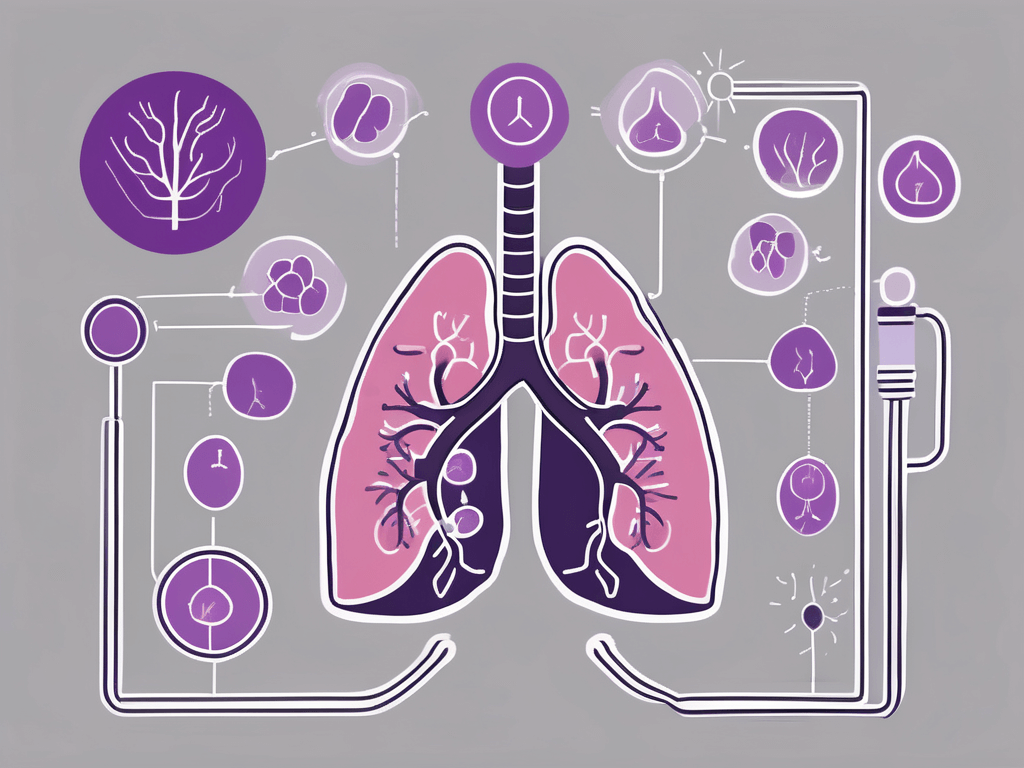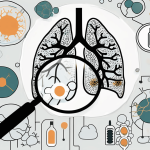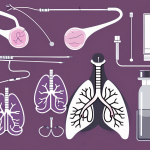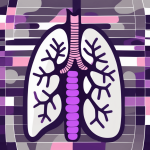Gain valuable insights into Adenocarcinoma Lung, a subtype of non-small cell lung cancer, by exploring its causes, prevalence, symptoms, and diagnostic procedures. Understand the role of genetic and environmental factors in its development and learn about lifestyle modifications to mitigate risks. Recognize the importance of early detection and timely intervention in improving treatment outcomes. Stay informed and empowered in managing Adenocarcinoma Lung for better prognosis and quality of life.
Adenocarcinoma Lung is a form of lung cancer that requires thorough understanding in order to effectively manage and treat it. By comprehending the causes, recognizing the symptoms, and understanding the available treatment options, individuals can take a proactive approach towards their health. In this article, we will delve deeper into the complexities of Adenocarcinoma Lung and provide valuable insights into managing this condition.
What is Adenocarcinoma Lung?
Adenocarcinoma Lung is a subtype of non-small cell lung cancer (NSCLC) that originates in the cells lining the air sacs in the lungs. These cancerous cells tend to multiply rapidly, forming tumors that may spread to other parts of the body if left untreated. Understanding the nature of Adenocarcinoma Lung is crucial in identifying proper treatment strategies for this disease.
Defining Adenocarcinoma Lung
Adenocarcinoma Lung is characterized by the abnormal growth of glandular cells in the lungs. Initially, these cells may proliferate within the air sacs, but over time, they can invade nearby tissues and spread to distant organs through the bloodstream or lymphatic system. The development of Adenocarcinoma Lung is influenced by various factors, including genetics, environmental triggers, and lifestyle choices.
The Prevalence of Adenocarcinoma Lung
Adenocarcinoma Lung is one of the most common types of lung cancer worldwide, accounting for approximately 40% of all cases. It is more prevalent in non-smokers and occurs more frequently in women than in men. The incidence of Adenocarcinoma Lung has been steadily increasing in recent years, highlighting the importance of early detection and effective treatment options.
When it comes to Adenocarcinoma Lung, early detection plays a crucial role in improving patient outcomes. Due to the nonspecific symptoms in the early stages, such as coughing, shortness of breath, and fatigue, the disease often goes unnoticed until it has reached an advanced stage. Therefore, regular screenings and awareness campaigns are essential in identifying the disease at an early stage.
Genetic factors also play a significant role in the development of Adenocarcinoma Lung. Certain gene mutations, such as epidermal growth factor receptor (EGFR) mutations, have been found to be more common in patients with this subtype of lung cancer. These mutations can affect the response to treatment and may influence the prognosis of the disease.
Environmental triggers, such as exposure to certain chemicals and pollutants, can increase the risk of developing Adenocarcinoma Lung. Occupational exposure to substances like asbestos, radon, and diesel exhaust has been linked to a higher incidence of lung cancer. Additionally, secondhand smoke and air pollution are also known to contribute to the development of this disease.
It is worth noting that Adenocarcinoma Lung is not solely a disease of smokers. While smoking is a significant risk factor for lung cancer, including Adenocarcinoma Lung, a significant number of cases occur in non-smokers as well. This highlights the importance of raising awareness about the risk factors and symptoms of lung cancer in both smokers and non-smokers.
Advancements in medical technology and research have led to the development of targeted therapies for Adenocarcinoma Lung. These therapies aim to inhibit specific molecules or pathways involved in the growth and spread of cancer cells. Targeted therapies can offer improved treatment outcomes and fewer side effects compared to traditional chemotherapy.
In conclusion, Adenocarcinoma Lung is a subtype of non-small cell lung cancer that arises from the cells lining the air sacs in the lungs. It is characterized by the abnormal growth of glandular cells and can spread to other parts of the body if left untreated. The prevalence of Adenocarcinoma Lung has been increasing, emphasizing the need for early detection and effective treatment options. Genetic and environmental factors play a significant role in the development of this disease. Awareness campaigns, regular screenings, and targeted therapies are crucial in improving patient outcomes and reducing the burden of Adenocarcinoma Lung.
The Causes of Adenocarcinoma Lung
Adenocarcinoma Lung, a type of lung cancer, is a complex disease with multiple contributing factors. While the exact cause of Adenocarcinoma Lung remains unclear, several factors have been identified as potential contributors to its development. Understanding these causes can help individuals make informed decisions about their lifestyle and take necessary precautions to minimize the risk.
Genetic Factors and Adenocarcinoma Lung
Genetic mutations play a significant role in the development of Adenocarcinoma Lung. Certain gene alterations, such as mutations in the EGFR or ALK genes, are more commonly found in individuals with this type of lung cancer. These mutations can lead to uncontrolled cell growth and the formation of tumors in the lungs. Genetic testing can provide invaluable information about a person’s susceptibility to Adenocarcinoma Lung and guide treatment decisions.
In addition to EGFR and ALK mutations, other genetic factors may also contribute to the development of Adenocarcinoma Lung. Researchers are actively studying the role of different genes and their interactions in the development of this disease. By unraveling the genetic basis of Adenocarcinoma Lung, scientists hope to develop more targeted therapies and personalized treatment approaches.
Environmental Triggers for Adenocarcinoma Lung
Exposure to certain environmental factors can increase the risk of developing Adenocarcinoma Lung. Prolonged exposure to secondhand smoke, air pollution, asbestos, radon, and certain carcinogens can significantly contribute to the development of this condition. Secondhand smoke, for example, contains numerous harmful chemicals that can damage the cells in the lungs and increase the risk of cancer.
Air pollution, both outdoor and indoor, is another environmental trigger for Adenocarcinoma Lung. Fine particulate matter and toxic gases present in polluted air can enter the respiratory system and cause inflammation and damage to lung tissues. Long-term exposure to air pollution has been linked to an increased risk of lung cancer, including Adenocarcinoma Lung.
Furthermore, occupational exposure to asbestos, a mineral commonly used in construction materials, can lead to the development of Adenocarcinoma Lung. When asbestos fibers are inhaled, they can cause chronic inflammation and scarring in the lungs, eventually leading to the formation of cancerous cells. Radon, a naturally occurring radioactive gas, is another environmental trigger that can seep into homes and increase the risk of lung cancer.
Identifying and minimizing exposure to these harmful substances can help reduce the risk of Adenocarcinoma Lung. Implementing proper ventilation systems, wearing protective masks in polluted areas, and following safety guidelines in workplaces where asbestos is present are some preventive measures individuals can take to protect themselves.
Lifestyle and Adenocarcinoma Lung
Although genetics and environmental factors play significant roles, lifestyle choices can also impact the risk of developing Adenocarcinoma Lung. Studies have shown that smoking is a leading cause of lung cancer, including Adenocarcinoma Lung. The harmful chemicals present in tobacco smoke can directly damage the DNA in lung cells, leading to genetic mutations and the development of cancer.
Quitting smoking is one of the most effective ways to reduce the risk of Adenocarcinoma Lung. The benefits of quitting extend beyond lung health, as it also decreases the risk of other smoking-related diseases such as heart disease and stroke. Adopting a healthier lifestyle, including regular exercise, a balanced diet, and avoiding exposure to secondhand smoke, can further decrease the chances of developing this condition.
It is important to note that while lifestyle changes can reduce the risk of Adenocarcinoma Lung, they cannot completely eliminate it. Individuals with a family history of lung cancer or other risk factors should consult with healthcare professionals for personalized advice and screening recommendations.
Recognizing the Symptoms of Adenocarcinoma Lung
Early detection of Adenocarcinoma Lung is essential for successful treatment outcomes. Understanding the symptoms associated with this condition is crucial in seeking timely medical attention.
Early Signs of Adenocarcinoma Lung
In the early stages, Adenocarcinoma Lung may not cause noticeable symptoms. However, as the cancer progresses, individuals may experience persistent coughing, shortness of breath, chest pain, fatigue, unexplained weight loss, and coughing up blood. These symptoms should not be ignored and warrant further medical evaluation.
Progression of Symptoms in Adenocarcinoma Lung
As Adenocarcinoma Lung advances, additional symptoms may arise. These can include recurring respiratory infections, hoarseness, difficulty swallowing, bone pain, and swelling in the face and neck. Recognizing these progressive symptoms is crucial in obtaining an accurate diagnosis and beginning appropriate treatment.
When to Seek Medical Attention
If you experience any of the aforementioned symptoms or have concerns about your lung health, it is imperative to seek medical attention promptly. Early diagnosis and intervention can significantly increase the chances of successful treatment and recovery.
Diagnosing Adenocarcinoma Lung
Diagnosing Adenocarcinoma Lung requires a comprehensive medical evaluation. Through a series of tests and examinations, healthcare professionals can accurately identify and assess the extent of the disease.
Medical History and Physical Examination
During the initial consultation, your healthcare provider will review your medical history and perform a physical examination. This helps to gather crucial information and evaluate any potential risk factors associated with Adenocarcinoma Lung. Your doctor may also inquire about any symptoms you are experiencing and assess your overall health.
Imaging Tests for Adenocarcinoma Lung
Imaging tests, such as chest X-rays, computed tomography (CT) scans, and magnetic resonance imaging (MRI), play a vital role in diagnosing Adenocarcinoma Lung. These imaging techniques allow healthcare professionals to visualize the lungs and identify any abnormalities or tumors. Additionally, a positron emission tomography (PET) scan may be utilized to determine the extent of the disease and identify potential metastases.
Biopsy and Lab Tests
To confirm the diagnosis of Adenocarcinoma Lung, a biopsy is often performed. During a biopsy, a small sample of tissue is collected from the lung for examination under a microscope. This allows pathologists to determine the presence of cancerous cells and provide additional information about the disease. Furthermore, laboratory tests may be conducted on the biopsy sample to analyze genetic mutations and guide treatment decisions.
In Conclusion
Understanding Adenocarcinoma Lung is crucial in effectively managing this form of lung cancer. By comprehending the causes, recognizing the symptoms, and undergoing proper diagnostic procedures, individuals can take control of their health and seek appropriate treatment options. It is important to remember that early detection and timely intervention play a significant role in improving prognosis and enhancing overall quality of life. Through continued research and advancements in treatment options, we strive towards better outcomes for individuals affected by Adenocarcinoma Lung.






